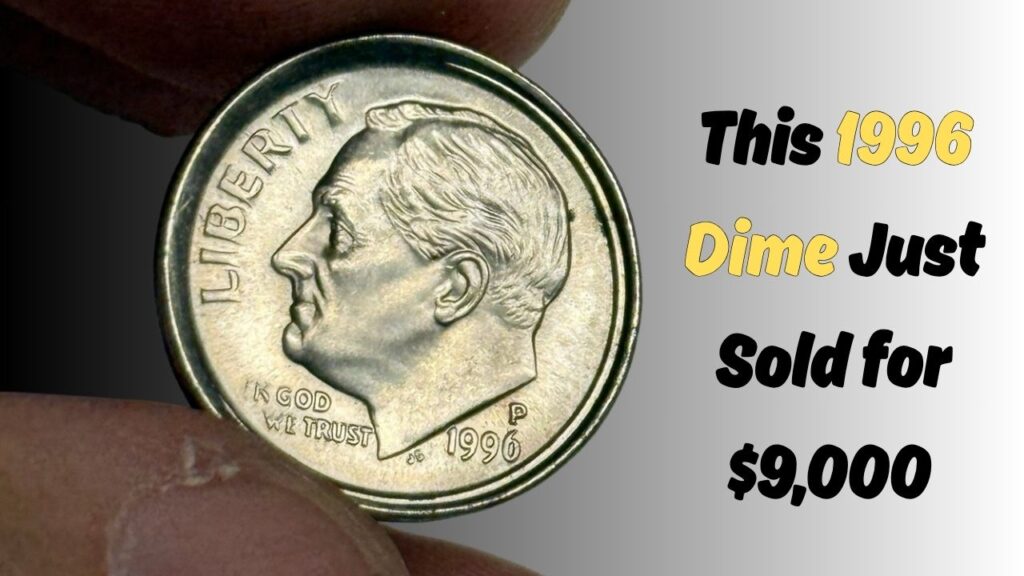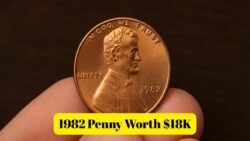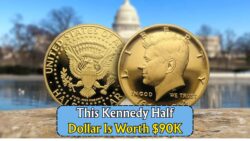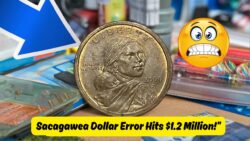1996 Dime – At first glance, pocket change seems mundane. You might toss it casually onto your nightstand or forget it in a cup holder in your car. But sometimes, buried within your everyday coins, hides a small treasure that could fetch thousands of dollars at auction. Recently, a seemingly ordinary 1996 Roosevelt dime shocked collectors by selling for an astonishing $9,000. Why did this common-looking dime command such an exceptional price? Let’s explore the fascinating reasons behind the rarity, desirability, and high value of this unique 1996 dime.
Understanding the Roosevelt Dime Series
Introduced in 1946, the Roosevelt dime was minted to honor President Franklin D. Roosevelt after his death. It’s been continuously minted ever since and is a staple in American coinage. Generally, Roosevelt dimes produced after 1965 contain no silver; instead, they feature a clad composition of copper-nickel alloy. Due to mass production, most Roosevelt dimes from recent decades aren’t valuable beyond their face value. However, rare mint errors and unique varieties can significantly boost the value of these seemingly common coins.
Mint Errors and Their Impact on Coin Value
Mint errors are mistakes made during the coin manufacturing process. They are relatively uncommon and can drastically increase the value of a coin, depending on their rarity and severity. Some typical mint errors include:
- Double Dies: Images or lettering struck twice, causing visible doubling.
- Off-Center Strikes: Coins struck off the center of the die, leading to partial or distorted images.
- Die Cracks: Coins with visible cracks caused by a damaged die.
- Wrong Planchet Errors: Coins struck on planchets intended for another denomination or composition.
These errors intrigue collectors, significantly enhancing a coin’s collectible and monetary value.
What Makes the 1996 Roosevelt Dime Worth $9,000?
The particular 1996 dime that recently auctioned for $9,000 was not valuable solely due to its age, but rather due to a rare mint error known as the “wrong planchet error.” This dime was mistakenly struck on a copper planchet meant for a Lincoln cent (penny), instead of its standard copper-nickel clad composition. This error makes the dime extraordinarily rare, given that quality control measures at the U.S. Mint typically prevent such mistakes.
Identifying the Wrong Planchet Error
The 1996 Roosevelt dime struck on a copper planchet exhibits several unique characteristics, including:
- Copper Color: Unlike the standard silver-colored Roosevelt dime, this coin displays a reddish-brown color similar to a penny.
- Weight Difference: Standard Roosevelt dimes weigh approximately 2.27 grams, but a copper cent planchet weighs about 2.5 grams.
- Diameter and Thickness: Due to the incorrect planchet, slight differences in thickness and size may occur, though the overall diameter remains close enough to pass undetected initially.
Collectors and coin dealers use precise scales and visual inspection to verify authenticity and distinguish genuine errors from altered or counterfeit coins.
Why Collectors Pay Premium Prices for Mint Errors
Serious collectors eagerly seek out mint errors due to their rarity and uniqueness. These errors are tangible pieces of numismatic history, showcasing the fascinating mistakes made by otherwise meticulous minting processes. Several reasons contribute to collectors paying premium prices:
- Limited Availability: Mint errors are uncommon and limited in number.
- Historical Significance: Errors highlight manufacturing processes and serve as educational tools.
- Investment Potential: Rare mint errors can significantly appreciate in value over time.
This demand explains why seemingly insignificant errors, like the 1996 copper-planchet dime, can fetch extraordinary sums at auctions.
Past Auctions of Similar Mint Errors
This dime isn’t an isolated incident. Previous auctions demonstrate that mint errors consistently command high prices. Some noteworthy examples include:
| Coin | Mint Error Type | Auction Price |
|---|---|---|
| 1943 Copper Lincoln Cent | Wrong Planchet | $1.7 million |
| 2000 Sacagawea Dollar/Washington Quarter Mule | Mule Error | $100,000+ |
| 1983 Copper Penny (should be zinc) | Wrong Planchet | $23,000 |
| 1996 Roosevelt Dime on Copper Planchet | Wrong Planchet | $9,000 |
These records reinforce how collectible and valuable mint error coins have become, fueling ongoing interest among collectors.
How to Check If You Have a Valuable Coin
Given the remarkable price fetched by this dime, it’s natural to wonder if you might unknowingly possess a similar valuable coin. Here’s how you can verify:
- Visual Inspection: Look closely at your coins for unusual coloration, thickness, or odd features.
- Weight Check: Invest in an accurate digital scale. Standard coin weights are widely available online.
- Diameter Comparison: Use coin-measuring tools or calipers to detect subtle size differences.
- Consult Experts: If suspicious, reach out to a reputable coin dealer or grading service for authentication.
By carefully inspecting your pocket change, you might just discover a hidden gem worth thousands.
Where to Sell Valuable Coins
If you discover a coin you believe is rare or valuable, consider these avenues for selling it:
- Coin Auctions: Renowned auction houses such as Heritage Auctions or Stack’s Bowers.
- Online Marketplaces: eBay or specialized numismatic forums.
- Local Coin Dealers: Reputable dealers in your area for quick, personal transactions.
Always ensure your coin is authenticated by professional grading services like PCGS or NGC to maximize potential value.
The extraordinary sale price of this common-looking 1996 Roosevelt dime underscores a crucial lesson: never underestimate the value of everyday coins. Mint errors, especially those as rare as wrong planchet strikes, can turn seemingly worthless pocket change into small fortunes. The next time you empty your pockets, take an extra moment—you might just be holding something special.
FAQs About Valuable Mint Error Coins
Q1: Why was the 1996 dime worth $9,000?
- It was mistakenly struck on a copper cent planchet, making it extremely rare.
Q2: How can I identify a valuable mint error?
- Check for unusual color, weight differences, or other noticeable irregularities and consult experts if needed.
Q3: Are all old coins valuable?
- No, age alone does not determine value; rarity, condition, and errors matter most.
Q4: Where can I get my coin authenticated?
 Texas Astronaut Dollar Coin Goes Viral – See Why Collectors Are Calling It “The Best Design Ever”
Texas Astronaut Dollar Coin Goes Viral – See Why Collectors Are Calling It “The Best Design Ever”
- Professional grading services like PCGS or NGC provide authentication and grading.
Q5: What’s the most valuable mint error coin ever sold?
- The 1943 copper Lincoln cent, which sold for over $1.7 million at auction.





